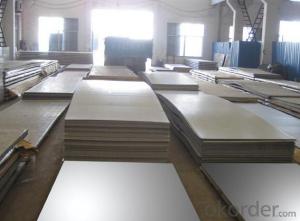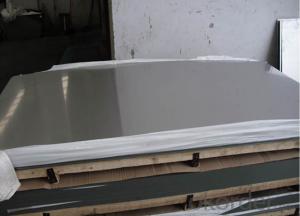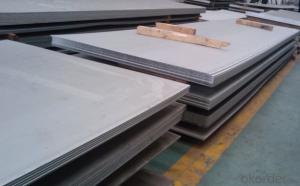Stainless steel plate/sheet 304,201,202,310S,316L,316Ti,304L,420,430,444
- Loading Port:
- Shanghai
- Payment Terms:
- TT OR LC
- Min Order Qty:
- 500 m.t
- Supply Capability:
- 5000000 m.t/month
OKorder Service Pledge
OKorder Financial Service
You Might Also Like
Stainless steel plate/sheet
304,201,202,310S,309S,316L,316Ti,321,304L,410,420,430,444,443,409L,904L
| Description | steel sheet,hot rolled steel sheet,cold rolled steel sheet, steel sheet,sheet,steel plate |
| Standard | ASME, ASTM, EN ,BS,GB,DIN, JIS etc |
| Application | Steel sheet applies to construction field, ships building industry, petroleum & chemical industries, war and electricity industries, food processing and medical industry, boiler heat exchanger, machinery and hardware fields. |
| Packaging | Standard export sea-worthy packing |
| Delivery time | 10-30 days |
| Note | Our company has cooperative relation between the domestic agents. Stainless steel sheet can be made accordingto the customers requirements. Fasten delivery. Quality assured. |
| Quality | No.1 |
| Productivity | 1200ton/day |
| Contacts | If you have any question,please feel free contact me. |
Stainless steel sheet surface finish characteristics
| Surface finish | Characteristics and application |
| 2B | The surface brightness and flatness of no2B is better than no2D. then through a special surface treatment to improve its mechanical properties,No2B could nearly satisfy comprehensive uses. |
| No.1 | Polished with abrasive belt of grit#100-#200, have better brightness with discontinuous coarse stria, used as inner and external ornaments for building, electrical appliances and kitchen utensils etc. |
| No.4 | Polished with abrasive belt of grit #150-#180,have better brightness with discontinuous coarse stria, but thinner than No3, are used as bathtub buildings inner and external ornaments electrical appliances kitchen utensils and food processing equipment etc. |
| HL | Polished with abrasive belt of grit #150-#320 on the NO.4 finish and has continuous streaks, mainly used as buildings ornaments elevators, door of building, frontal plate etc. |
| BA | Cold rolled, bright annealed and skin-passed, the product have excellent brightness and good reflexivity like mirror, kitchen apparatus, ornament etc. |
| 8K |
Product Shows :
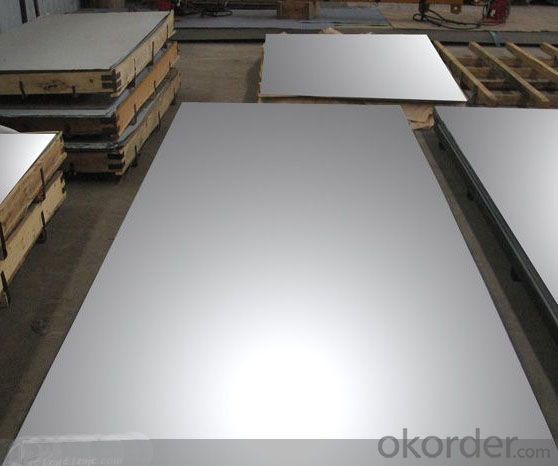

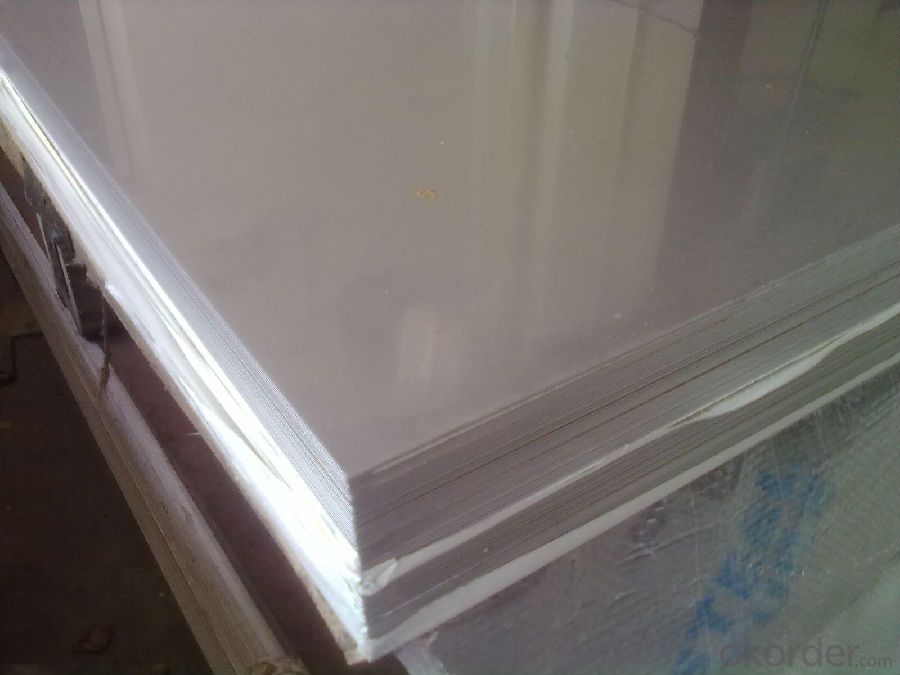
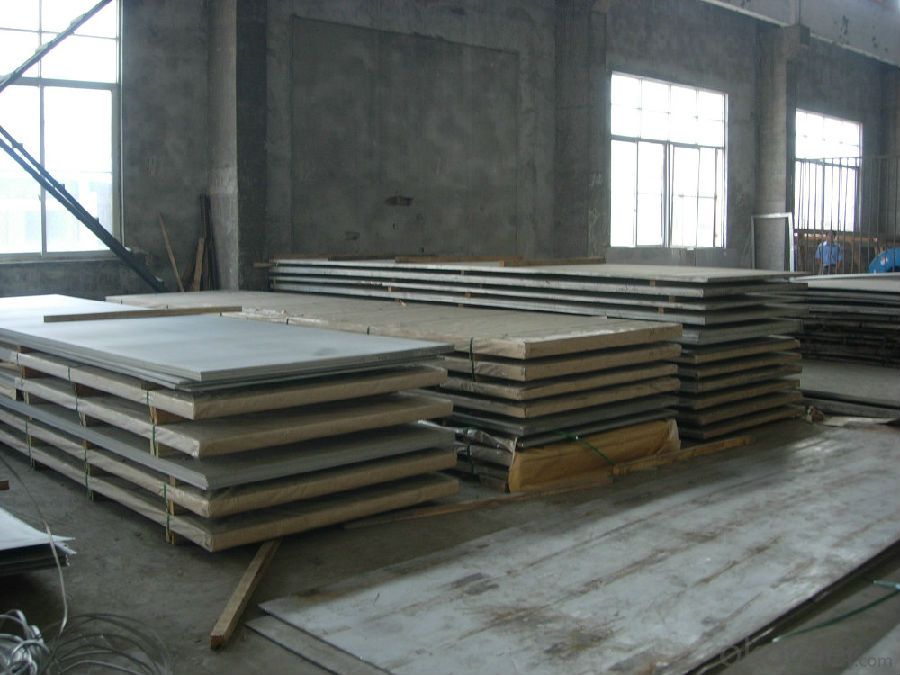

Application :
•Escalator, Elevator, Doors
•Furniture
•Production tools, Kitchen appliances, freezers, cold rooms
•Auto Parts
•Machinery and Packaging
•Equipment and Medical devices
•Transport system
Packaging and Loading

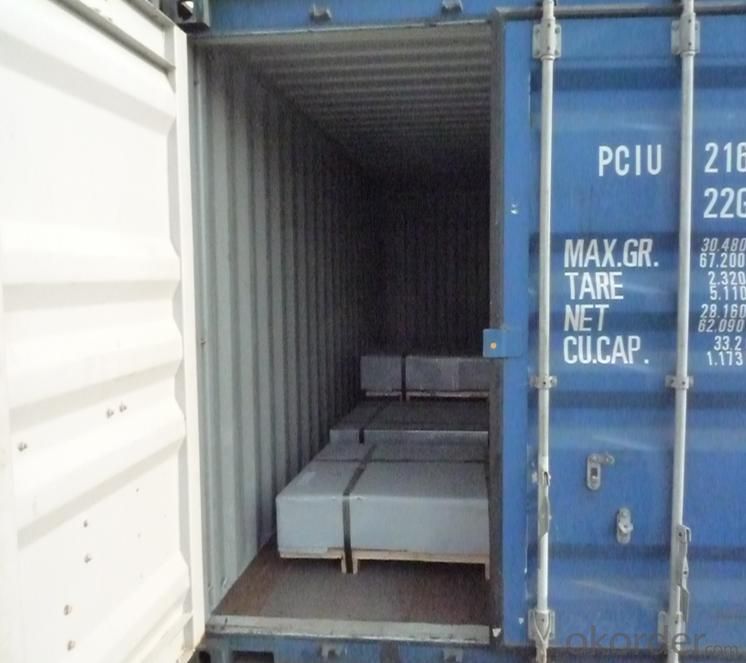
- Q:How do you determine the hardness of stainless steel sheets?
- There are multiple methods available to determine the hardness of stainless steel sheets. The Rockwell hardness test is a commonly used method that involves measuring the depth of indentation on the material's surface. This is done by applying a specific load using a diamond cone or steel ball and measuring the resulting depth of penetration. The Rockwell hardness value is then determined based on this depth. Another method is the Vickers hardness test, which involves using a diamond indenter to create a square-shaped indentation. The size of this indentation is measured and converted into a hardness value. This method is often preferred for thin materials like stainless steel sheets. The Brinell hardness test is an alternative technique where a known load is applied to the material using a hardened steel ball. The resulting indentation's diameter is then measured, and the hardness value is calculated based on both the applied load and the diameter of the indentation. Apart from these mechanical tests, non-destructive methods such as ultrasonic hardness testing and magnetic hardness testing can also be employed. Ultrasonic testing determines the speed of sound through the material, which is then correlated to its hardness. Magnetic hardness testing, on the other hand, measures the magnetic properties of the material, which are affected by its hardness. Overall, the hardness of stainless steel sheets can be determined using various methods depending on the specific requirements and characteristics of the material.
- Q:Can stainless steel sheets be used for hygienic environments?
- Stainless steel sheets are indeed suitable for hygienic environments. This is because stainless steel possesses certain inherent properties that render it highly resistant to corrosion, heat, and chemical damage, thus making it a popular choice for such environments. Its surface is smooth and non-porous, which facilitates easy cleaning and prevents the accumulation of bacteria, mold, or other contaminants. Furthermore, stainless steel is non-reactive and does not release any harmful substances, making it ideal for sensitive environments like food processing facilities, hospitals, pharmaceutical labs, and cleanrooms. Moreover, stainless steel is both durable and long-lasting, ensuring excellent hygiene and cleanliness for extended periods. All in all, stainless steel sheets are a dependable and hygienic option for various applications in environments that prioritize cleanliness and sanitation.
- Q:Stainless steel plate laser cutting how to charge?
- Charge standard: according to the material thickness of /1 meters, for example, 1mm thick steel, about 6 yuan / M
- Q:How do I install stainless steel sheets?
- In order to install stainless steel sheets, there are a few steps that need to be followed: 1. Begin by accurately measuring the area where the stainless steel sheets will be installed. Use a tape measure to determine the length and width of the space. Furthermore, ensure that the surface is clean, dry, and devoid of any debris or contaminants. 2. If the stainless steel sheets you have acquired are not already pre-cut to the desired size, you will need to cut them to fit the area. Utilize a metal cutting saw, such as a circular saw or an angle grinder with a metal-cutting blade, to achieve precise cuts. As you cut, it is imperative to wear safety goggles and work gloves to protect yourself from any flying debris. 3. Depending on your preference, you can either use an adhesive or screws to secure the stainless steel sheets to the surface. If you opt for adhesive, apply a thin layer of construction adhesive to the back of the sheet and firmly press it onto the surface. For added security, you can also use screws to fasten the sheets. Begin by pre-drilling holes into the stainless steel sheets, then screw them into place using stainless steel screws. 4. Once the sheets are in position, ensure the edges are secure by utilizing trim pieces or stainless steel molding. This will provide a polished and finished appearance to your installation, while also offering additional protection to the edges of the sheets. 5. After the installation is complete, clean the stainless steel sheets using a mild detergent and a soft cloth. Avoid using abrasive cleaners or scrub brushes, as they can cause scratches on the surface. Regular cleaning and maintenance are essential for preserving the appearance and longevity of the stainless steel sheets. It is important to remember that if you have any uncertainties regarding the installation process, it is always advisable to consult a professional or seek guidance from the manufacturer of the stainless steel sheets you have purchased.
- Q:Can stainless steel sheets be used for conveyor systems?
- Yes, stainless steel sheets can be used for conveyor systems. Stainless steel is a durable and robust material that is resistant to corrosion, making it ideal for conveyor systems that may be exposed to moisture or harsh chemicals. Additionally, stainless steel is easy to clean and maintain, which is important for ensuring the hygiene and longevity of conveyor systems in industries such as food processing or pharmaceuticals. The smooth surface of stainless steel sheets also facilitates the movement of materials along the conveyor, reducing friction and improving efficiency. Overall, stainless steel sheets are a popular choice for conveyor systems due to their strength, corrosion resistance, and ease of maintenance.
- Q:What's the surface of the 304 stainless steel matte board?
- Silvery white, matte, hot rolled to specified thickness and then annealed and descaling. A rough, matt surface that does not require surface gloss
- Q:How do you determine the thickness of a stainless steel sheet?
- There are multiple methods at your disposal for determining the thickness of a stainless steel sheet. The most commonly used and precise approach involves utilizing a digital or analog caliper. This particular instrument allows for highly accurate measurements of the sheet's thickness. Simply position the caliper jaws on opposite sides of the sheet and close them until they rest snugly against the surface. The caliper will display the measurement, indicating the thickness of the stainless steel sheet. An alternative method involves employing a micrometer, which is akin to a caliper but offers even more precise measurements. By placing the jaws of the micrometer on the edge of the sheet and gently closing them until contact is made, the micrometer will provide a reading that reveals the thickness of the stainless steel sheet. Should these instruments be unavailable, you can still determine the thickness of a stainless steel sheet by consulting its specifications or the manufacturer's information. Typically, stainless steel sheets are accompanied by labels or tags that clearly indicate the thickness, allowing for easy reading and verification. In certain instances, it may be necessary to estimate the thickness of a stainless steel sheet without access to measuring tools. In such cases, you can compare the sheet to known reference materials of varying thicknesses. By visually comparing the sheet to these references, you can make an informed estimation regarding its thickness. However, it is important to note that this method is less accurate and should only be employed as a last resort.
- Q:Are stainless steel sheets resistant to UV radiation?
- Generally, stainless steel sheets have resistance to UV radiation. The composition of stainless steel consists mainly of iron, chromium, and other alloying elements, which contribute to its exceptional resistance to various types of corrosion, including UV radiation. The presence of chromium in stainless steel leads to the formation of a protective oxide layer on the surface, acting as a shield against UV rays and preventing oxidation or deterioration of the metal. Nevertheless, it is worth noting that continuous exposure to intense UV radiation can still result in some discoloration or fading of the stainless steel surface over time. To preserve the appearance and durability of stainless steel sheets used outdoors, it is advisable to regularly clean and apply appropriate treatments to protect the surface and ensure long-lasting performance.
- Q:Can stainless steel sheets be used for food processing equipment?
- Yes, stainless steel sheets can be used for food processing equipment. Stainless steel is a popular choice for such applications due to its corrosion resistance, easy cleaning properties, and hygienic characteristics. It is able to withstand high temperatures, is non-reactive with food, and does not impart any taste or odor.
- Q:What's the difference between stainless steel hot rolling and cold rolling?
- The difference between hot rolling and cold rolling of stainless steel is that cold rolling is rolled on the basis of hot rolling.
1. Manufacturer Overview |
|
|---|---|
| Location | |
| Year Established | |
| Annual Output Value | |
| Main Markets | |
| Company Certifications | |
2. Manufacturer Certificates |
|
|---|---|
| a) Certification Name | |
| Range | |
| Reference | |
| Validity Period | |
3. Manufacturer Capability |
|
|---|---|
| a)Trade Capacity | |
| Nearest Port | |
| Export Percentage | |
| No.of Employees in Trade Department | |
| Language Spoken: | |
| b)Factory Information | |
| Factory Size: | |
| No. of Production Lines | |
| Contract Manufacturing | |
| Product Price Range | |
Send your message to us
Stainless steel plate/sheet 304,201,202,310S,316L,316Ti,304L,420,430,444
- Loading Port:
- Shanghai
- Payment Terms:
- TT OR LC
- Min Order Qty:
- 500 m.t
- Supply Capability:
- 5000000 m.t/month
OKorder Service Pledge
OKorder Financial Service
Similar products
New products
Hot products
Related keywords
